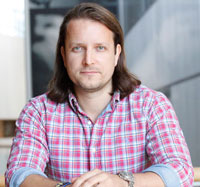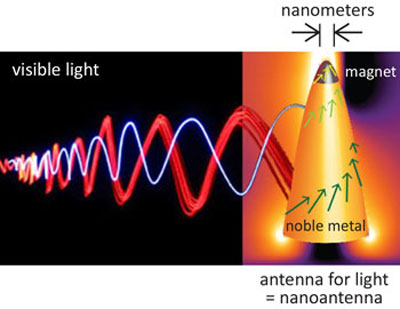| Posted: Oct 13, 2015 | |
Nanoplasmonics makes the impossible possible(Nanowerk News) Over a five-year period, Alexander Dmitriev and his research team at Chalmers will take on a task that until now has been deemed impossible: creating strong interaction between light and magnetic fields and determining ways to control light with magnetism on the nanoscale. The Harnessing light and spins through plasmons at the nanoscale project has received close to SEK 38 million from the Knut and Alice Wallenberg Foundation, and may eventually lead to more effective ways to process and store information with light and create different types of optical elements. |
|
 Alexander Dmitriev "The entire field is still fairly unknown, and we are one of only a few research teams in the world currently looking specifically into light as nanoplasmonic resonances combined with magnetic nanostructures," says Alexander Dmitriev, associate professor of physics at Chalmers. For a long time it has been deemed impossible to combine light and magnetism because of a frequency gap where light moves 10,000 times faster than magnetism reacts, which means they do not feel each other and cannot integrate. By capturing the light in what are known as nanoantennas, which are built over a surface, it is possible for the two to interact on the nanoscale. There are nanoplasmons in this artificially created surface of nanoantennas – in other words small units of electrons that when exposed to visible light, move or oscillate collectively and thus create enhanced and localised electromagnetic fields that can then be connected with magnetic materials via different types of magneto-optical effects. "We want to attempt to force the light to become steerable using magnetism, and vice versa, and thus eliminate the frequency gap," says Alexander Dmitriev. |
|
 |
|
| Steerable optical components | |
| When the project ends in five years, the team hopes to have obtained a fundamental understanding of the field and be better equipped to build the specific nanostructures needed to achieve the desired properties. By bringing internationally leading research teams from Chalmers and the universities in Uppsala and Gothenburg together, it will be possible to utilise expertise within both theoretical and experimental physics in nanoplasmonics, nanomagnetism and spintronics. However, even if the project has a purely fundamental character, Alexander Dmitriev sees clear areas of application where it will hopefully be possible to use the methods in the future. | |
| "This technology could enable steerable and adaptable optical components that are not easily controlled with electric current, for example three-dimensional holograms that move in real time. Thanks to the enhanced interaction we want to create between light and magnetism on the nanoscale, it will be possible to use low-intensity magnetic fields similar to those found in regular refrigerator magnets, and it will be quick, energy-efficient and easy to integrate with electronics. |
| Source: By Karin Weijdegård, Chalmers University of Technology |
